All products featured are independently chosen by us. However, SoundGuys may receive a commission on orders placed through its retail links. See our ethics statement.
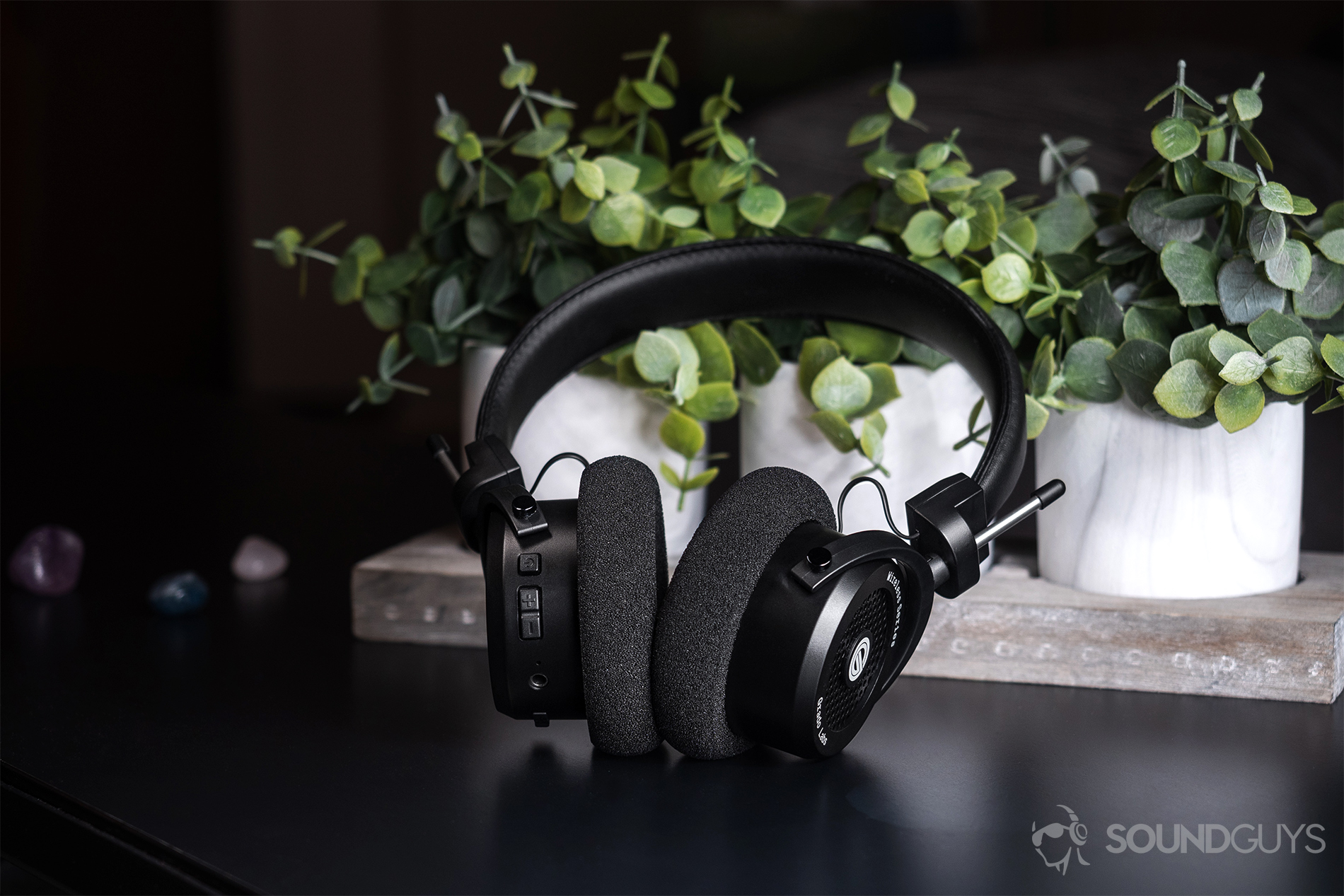
Grado GW100 review
Published onFebruary 9, 2021
Grado GW100
Bluetooth this, wireless that, with all the light being shone on the true wireless market, it’s easy to forget that on- and over-ear headphones have skin in the wireless audio ring, too. Well the Grado GW100 will please open-back listeners who want a little more freedom to move.
Editor’s note: this review was updated on February 9, 2021, to address an FAQ about the difference between open- and closed-back headphones, to address the Grado GW100 V2, and to include a contents menu.
Who is the Grado GW100 for?

- Grado fans. Maybe you’ve been rocking the SR60e for ages and have plenty of faith in the Brooklyn-based audio company. If that’s the case and you want to support the brand: these headphones are an interesting find.
- People yearning for the convenience of wireless open-back headphones. Although this demographic is likely a bit more narrow than breaking the category into two, the audience still exists, and the GW100 delivers a wide sense of 3D space without the wires.
Related: Best wireless headphones
How is the Grado GW100 built?
The headphones feature a plastic construction, which is surprising given the $249 USD price tag. Acting as a double-edged sword, this plastic build lets the GW100 remain lightweight and comfortable to wear, but it also feels a little on the cheap side. Grado provides a few accessories with the headset including a carrying pouch, 3.5mm aux cable, and a microUSB charging cable.
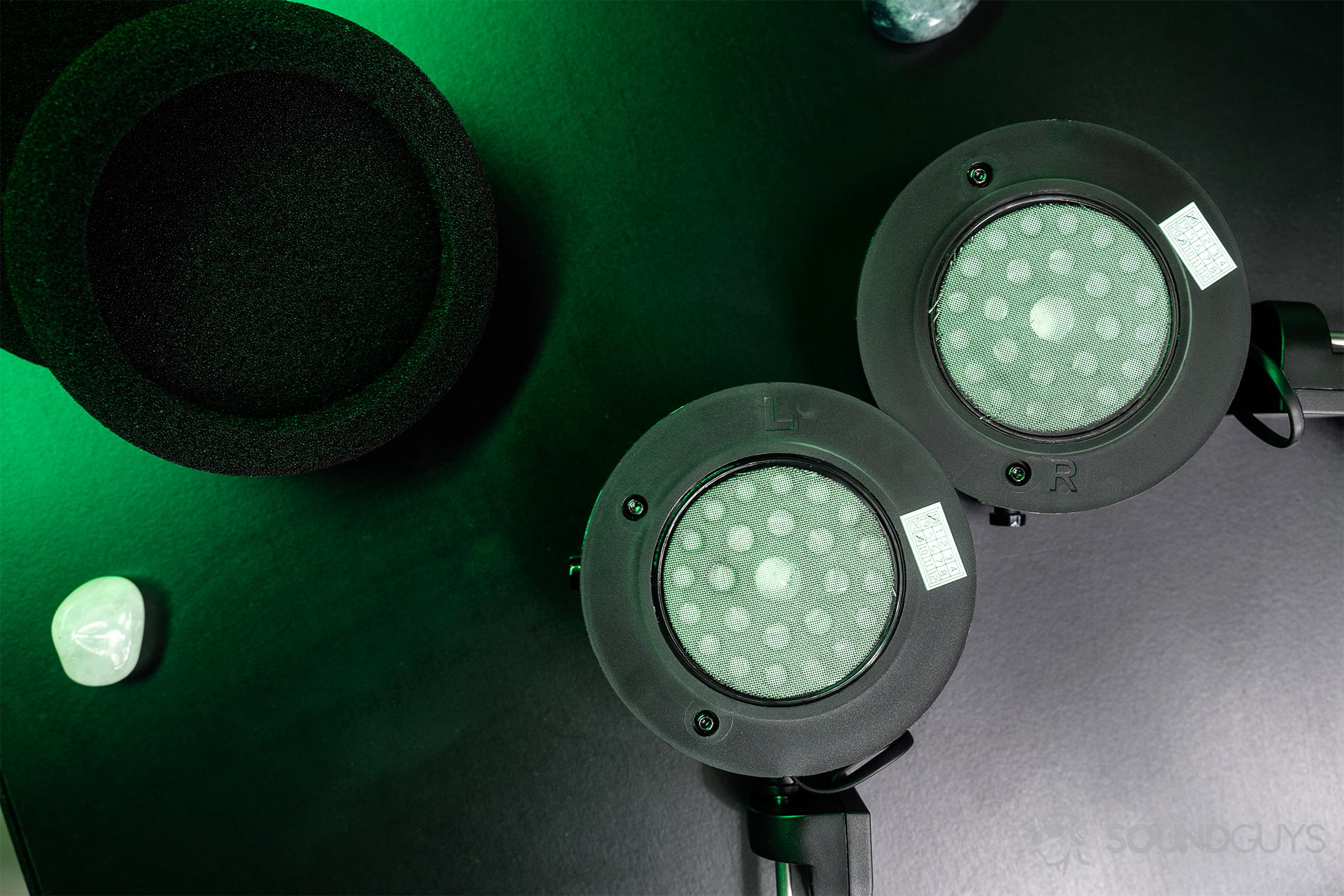
Thanks to the even weight distribution afforded by the thin headband, the supra aural design doesn’t cause discomfort during normal periods of wear. If, however, you wear glasses as I do, you’ll experience moderate temple pain after just half an hour. As with all Grado headphones, the included earpads are easy to replace and expanding the headband requires minimal effort. For male listeners with smaller craniums, or female listeners with average-sized ones, the smallest fit of the GW100 may be too loose. If I bob my head with minimal zeal, they slip off much like the Beyerdynamic Amiron Wireless do with Adam.
The freedom to move around your home with open-back headphones is great, but GW100 is rendered useless when in a communal setting.
An array of tactile buttons line the outer edge of the left ear cup, making playback and call control easy processes to operate. A microUSB input inlaid on the same ear cup stays protected by a silicone door. With USB-C becoming ever more salient, the choice for micro-USB charging looks increasingly anachronistic.
Plan on leaving the house? Best to leave these at home
Although the wireless GW100 headphones are designed to leak up to 60% less sound than their wired counterpart, it’s not enough of an improvement to make these usable for public transit. Not only did the entire subway cabin hear my dubious taste in music, but I heard plenty of commuter chatter and subway rumble, which only served to severely degrade audio quality. Safe to say, even the AirPods are better at keeping their noise in check better than these.
You may like: The best headphones for commuters
The mic works but not well
Background noise is slightly attenuated, but the integrated microphone isn’t anything fancy like the Bose SoundLink On-Ear’s dual-mic setup or Sony WH-1000XM4. When I called my Mom, the first thing she said was, “Why do you sound so distant, like you’re in an echo chamber?” That said, it’s fine for quick calls—but don’t expect a miracle to come of it.
How long does the battery last?
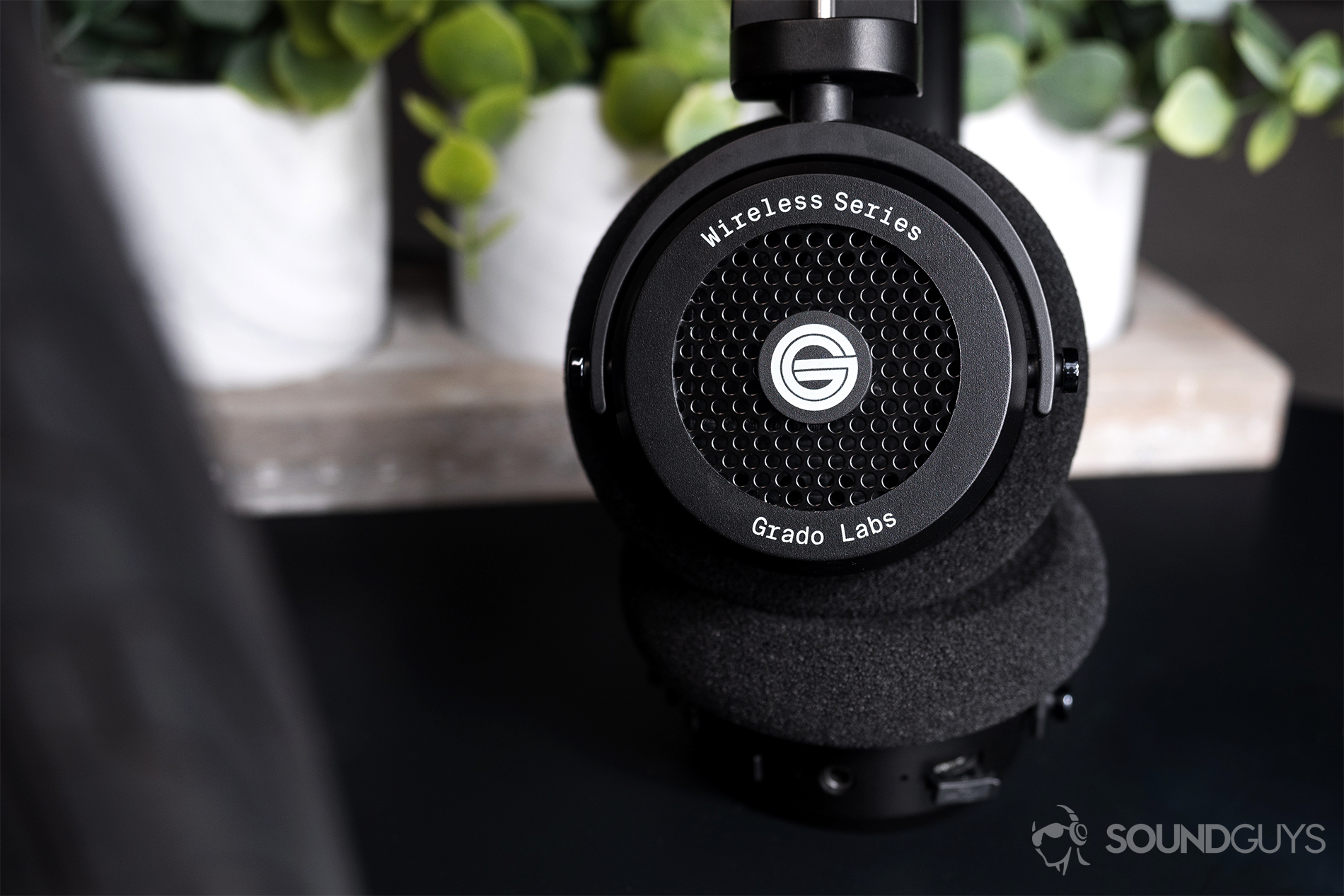
As a matter of fact, according to our objective testing—whereby we subject the headphones to a constant 75dB output—the 320mAh battery lasted 15.55 hours. Additionally, a full charge cycle requires just two hours. Although this battery life doesn’t compare to the Sony WH-1000XM3, which allow for just over 24 hours of playback, it exceeds Grado’s specs by 30 minutes.
What are the supported Bluetooth codecs?
Qualcomm’s aptX is the only high-quality Bluetooth codec supported by these headphones. And while we can moan and groan about the lackluster power efficiency afforded by the Bluetooth 4.2 connection, the fact of the matter is that it doesn’t make a huge difference seeing as few of us will listen to music for more than 15 hours straight. If you don’t care for the 10-meter Bluetooth range or the function fails, the auxiliary cable can always serve as a backup.
Related: Bluetooth multipoint 101
How do the Grado GW100 wireless open-back headphones sound?
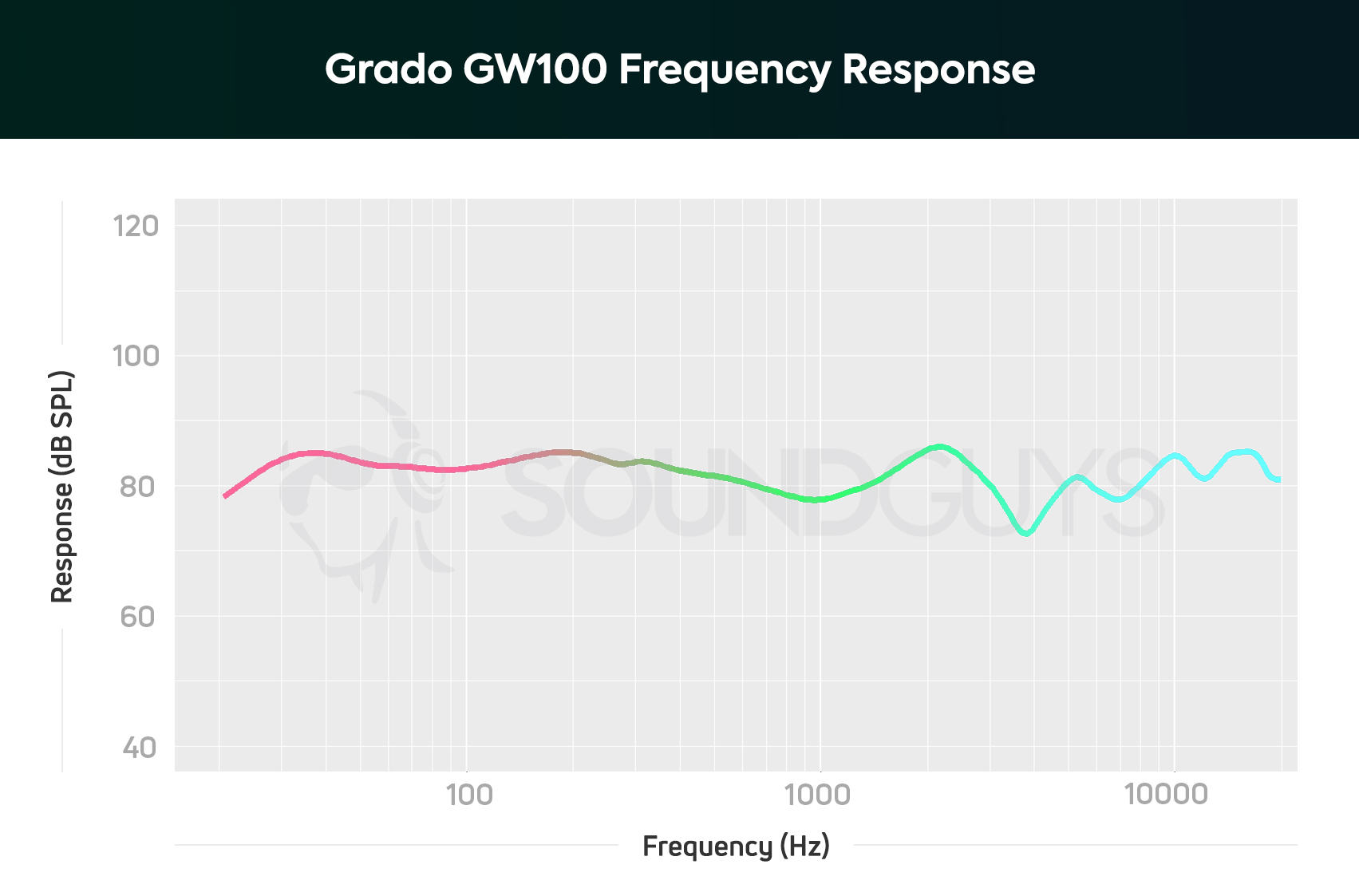
The GW100 sound signature is fairly neutral and lends itself nicely to acoustic tracks. They sound great as long as you don’t take them into a remotely noisy environment. Although the GW100 is supposed to free us from wires while granting the spacious sound quality of open-back cans, it’s just not practical. Listening with the headphones during a walk, at a coffee shop, or worse yet, on the subway, completely degrades the audio quality. However, if you remain in a quiet place, the freedom of movement is a joy.
Lows, mids, and highs
While low-end reproduction is better than I would have expected from a pair of open-back headphones, it sounds underwhelming relative to most consumer cans. For analytical listeners, however, the accurate bass response is a welcome aspect of the Grado sound.
Vocal reproduction is slightly more prominent, though; take the song Slow Disco – piano version performed by St. Vincent. Annie Clark’s vocals are easily heard above the beginning A and Em piano chords that signal each new beat. At the beginning of the song, just six seconds in, Clark takes a moment between the words “slow disco.” During this brief pause, the separation of her lips in preparation to pronounce “disco” is audible, something that other headphones like the Bowers & Wilkins P5 Wireless can’t replicate.
The Grado GW100 Wireless sound nearly identical to the popular Grado sr60e.
Treble frequencies are enjoyable and easy to listen to as they receive appropriate emphasis. If anything, a bit more oomph wouldn’t hurt if you decide to play around with your phone’s EQ settings. In Andrew Bird’s song Roma Fade, the cymbal hits take effort to separate from the drum kicks and Bird’s vocals. This masking took me by surprise, but I’d rather have a slightly underrepresented treble response than an overwhelming, deafening one.
Should you buy the Grado GW100 in 2021?
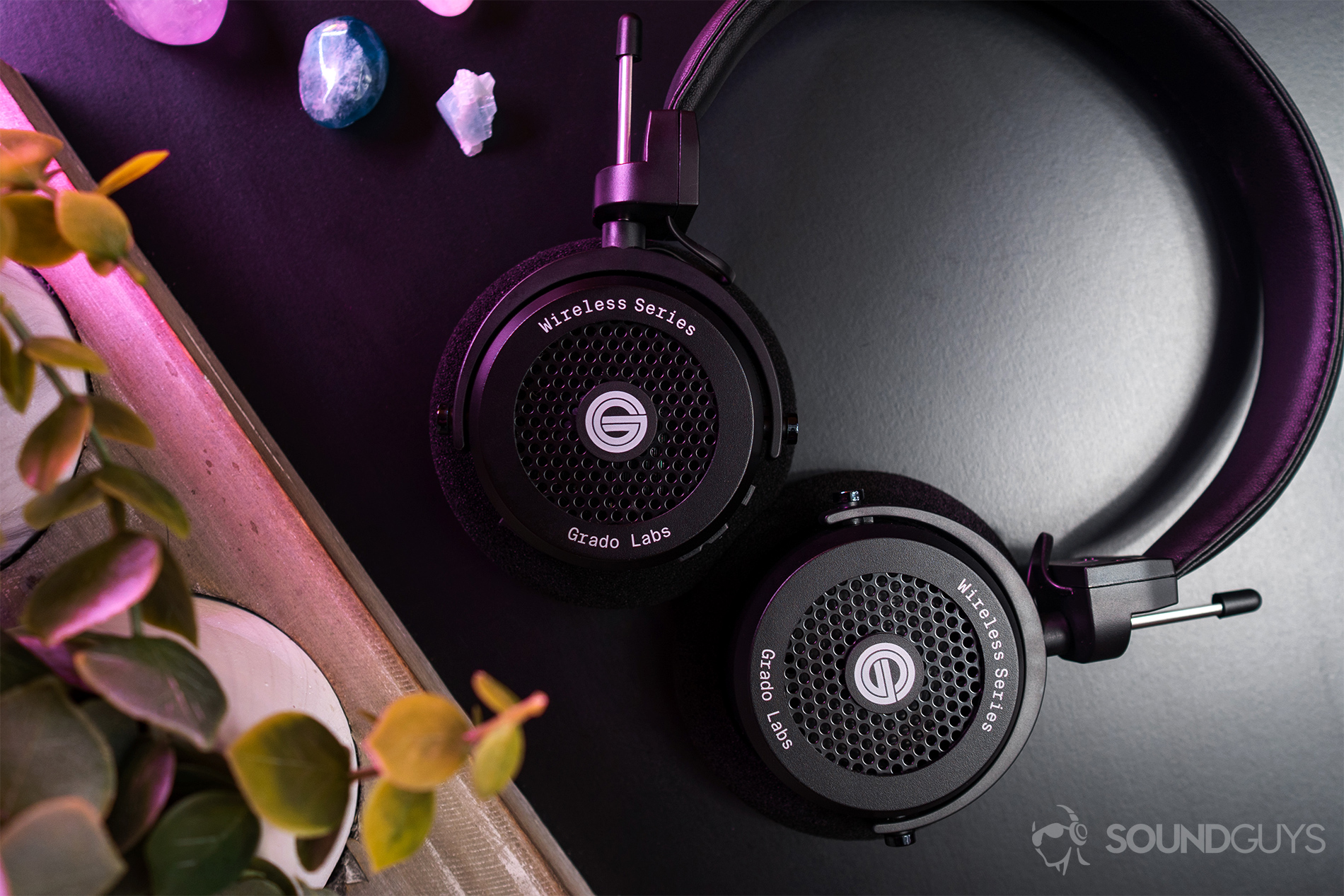
If you’re a die-hard Grado fan wanting to support the brand or someone who just needs the convenience and realistic perception of sound afforded by wireless open-back headphones, then the Grado GW100 is worth purchasing. Enjoying the open sound reproduction through the GW100 is a lovely experience, and being able to freely move about while doing so makes it that much better.
Frankly, though, the headphones seem to target a rather niche market—as those who just want open-back headphones are better off getting one of the company’s wired models while saving a good chunk of change. And listeners who want wireless headphones for commuting will benefit from cans that isolate them from the environment, rather than inviting outside noise in. On the whole though, if you find yourself drawn to the Grado GW100, you won’t be disappointed.

Still looking? Best on-ear headphones
Check out the Grado GW100 V2
The Grado GW100 V2 improves upon the original GW100 as it supports Bluetooth 5.0, and you can stream over SBC, AAC, and aptX. This means that both iPhone and Android smartphone owners can enjoy high-quality audio. Battery life is much improved with the GW100 V2, too: it lasts up to 40 hours on a single charge.
Save cash and go wired with the AKG K240 Studio
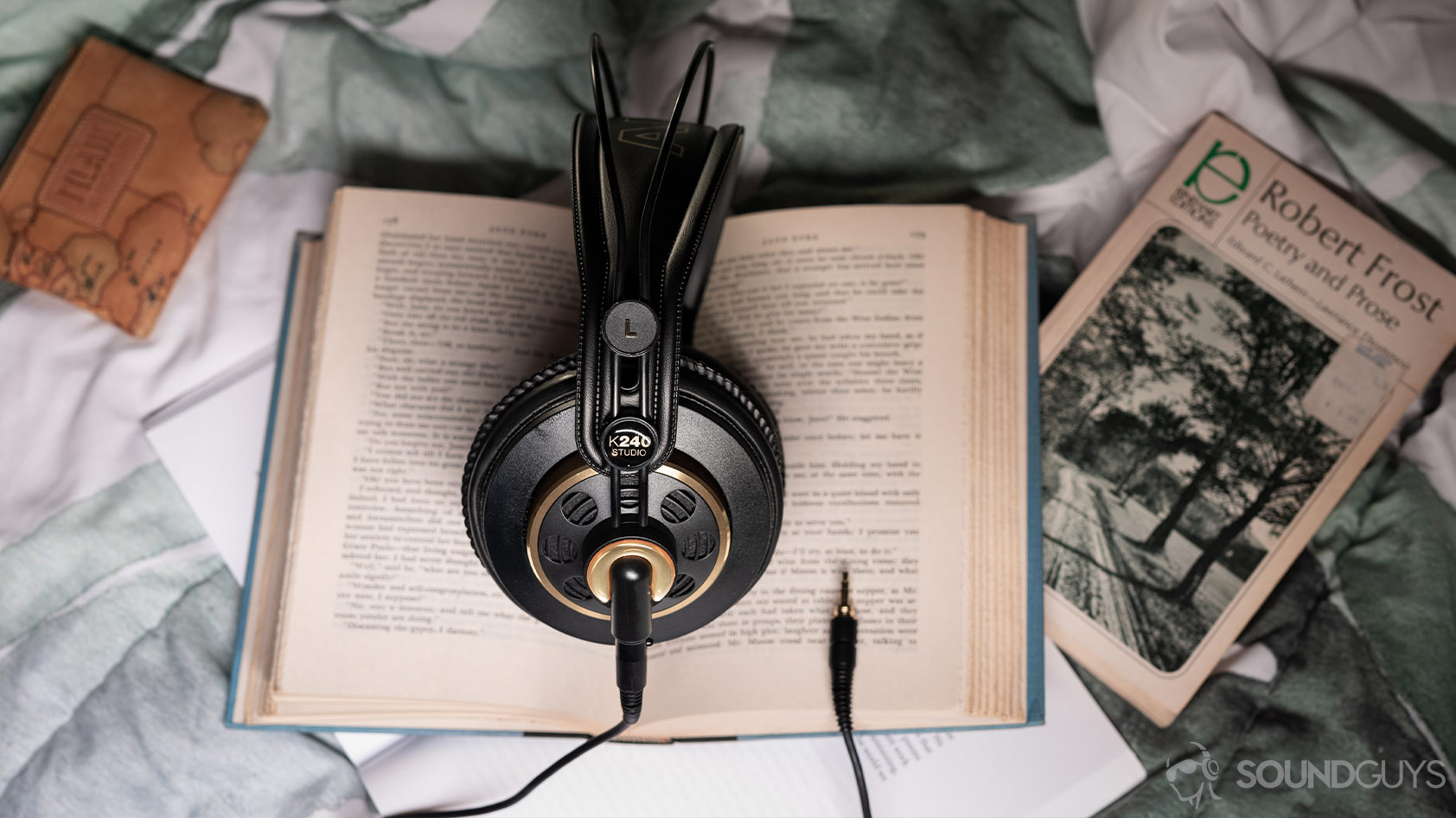
If you’re not wed to the idea of wireless open-back audio and want something with a similar effect for less, get the AKG K240 Studio headphones. These retail for ~$75 and are a tried and true fixture within the audiophile community. Bass notes are de-emphasized by these semi-open cans which can be a problem for some; however, if you prefer vocal clarity over bass presence, you’ll enjoy the AKG K240 headset.